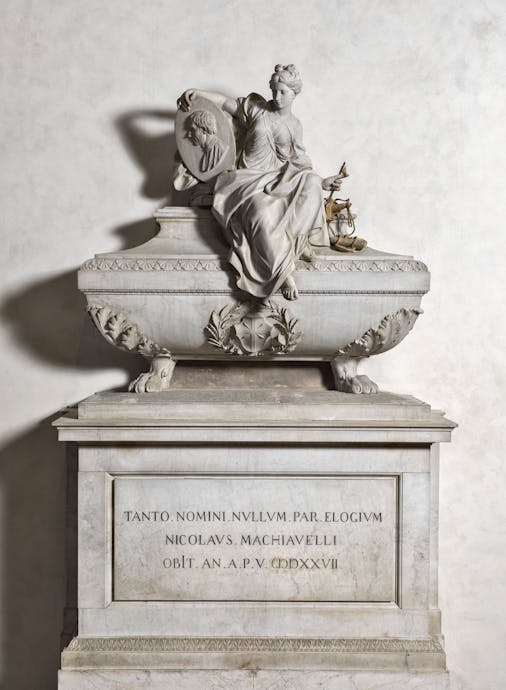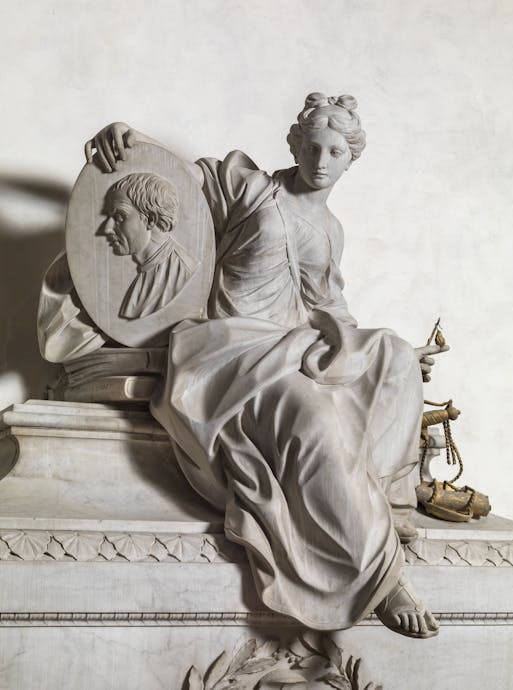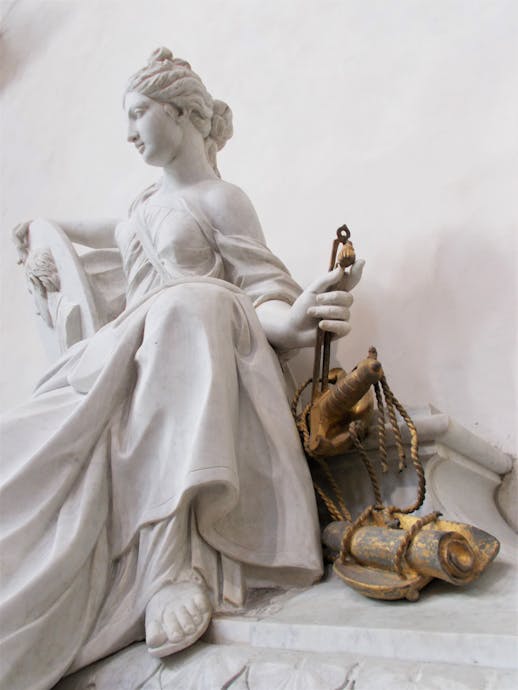Innocenzo Spinazzi
Artist: Innocenzo Spinazzi (Rome 1726 - Florence 1798)
Title: Monumental tomb of Niccolò Machiavelli (1469-1527)
Date: 1786, inaugurated 1787
Material and technique: marble, bronze
Dimensions: 290 x 500 cm
Inscription: "INNOCEN[ZO] SPINAZZI / ROMANO FACEVA 1786"
Position: Basilica of Santa Croce, south aisle, between fourth and fifth bay
Great historian and writer Niccolò Machiavelli's mortal remains were interred in his family chapel in Santa Croce in 1527, the year of his death, in a grave "of no particular distinction", because his republican sympathies and opposition to tyranny in the latter part of his political career had isolated him and earnt him the Medici family's hostility, to the point where he was forced to retire from public life. In fact, it was during his enforced absence that he wrote his most celebrated work, The Prince.
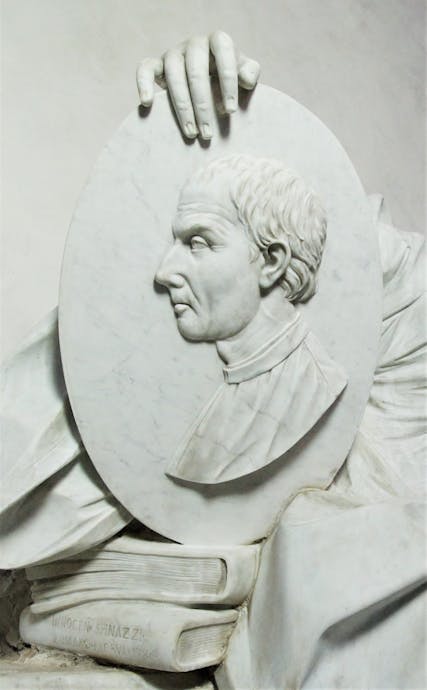
Innocenzo Spinazzi, Portrait of Machiavelli, detail of the monumental tomb of Niccolò Machiavelli, 1787. Basilica of Santa Croce, south aisle
It was the late 18th century before the time was considered ripe for the erection of a monumental tomb worthy of the great writer and politician. Under the enlightened rule of Grand Duke Pietro Leopoldo (1765–90), the new tomb was part of a broader rediscovery and reassessment of Machiavelli's thought strongly supported by Florence's English community. Under the grand duke's aegis, Lord George Nassau Clavering-Cowper, 3rd Earl Cowper, published the complete works of Machiavelli in six volumes with the printer Gaetano Cambiagi in 1782. This rediscovery prompted public fund raising and the Roman sculptor Innocenzo Spinazzi, a professor of sculpture at the Accademia di Belle Arti in Florence and himself a court artist, portraitist and restorer of antiquities, was commissioned to produce the tomb.
The design of the tomb, fairly simple by comparison with those around it, is in a classicising Rococo style focusing on the allegorical depiction of Politics seated on a neo-Renaissance sarcophagus and holding in her right hand a medallion with a portrait of Machiavelli,and in her left a scales symbolising the balance required in exercising the political arts, including diplomacy. The base bears an inscription devised by Pietro Feroni, a member of the Accademia della Crusca, stating: “TANTO NOMINI NULLUM PAR ELOGIUM”, ("no praise is sufficient for such a great name").
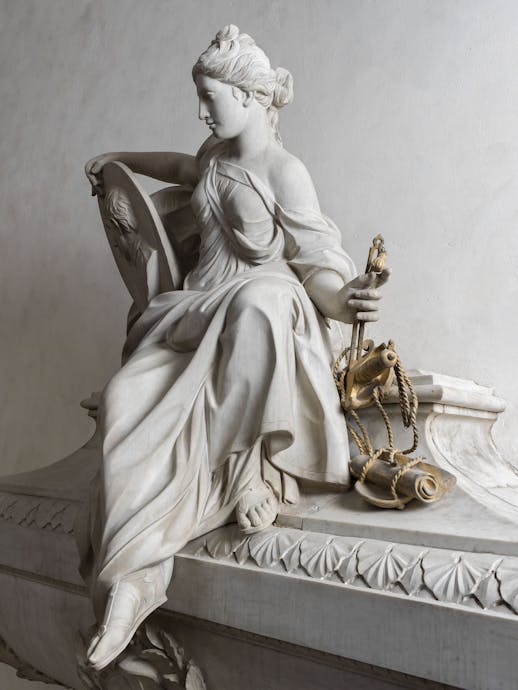
Innocenzo Spinazzi, Politics, detail of the monumental tomb of Niccolò Machiavelli, 1787. Basilica of Santa Croce, south aisle
